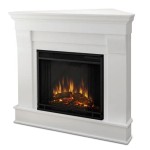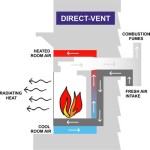Fireplace Lighting Ideas: Illuminating Your Hearth with Style and Functionality
The fireplace, a traditional focal point in many homes, serves as more than just a source of warmth. It offers an opportunity to create a cozy, inviting ambiance. While the fire itself provides a natural glow, incorporating strategic lighting can significantly enhance the fireplace's visual appeal and functionality, extending its use beyond the winter months. This article explores various fireplace lighting ideas, encompassing different styles, techniques, and considerations for creating a well-illuminated and aesthetically pleasing hearth area.
Effective fireplace lighting goes beyond simply placing a lamp nearby. It involves a thoughtful approach that considers the fireplace's architecture, the surrounding decor, and the desired atmosphere. Different lighting techniques can highlight architectural details, accentuate textures, and create a sense of depth. The article will delve into the nuances of these techniques, providing a comprehensive guide to illuminating the fireplace with style and functionality.
Ambient Lighting: Setting the Mood
Ambient lighting, also known as general lighting, provides overall illumination to a space. In the context of fireplace lighting, ambient lighting serves to create a foundation of light that complements the fire's glow and sets the overall mood. Several approaches can be employed to achieve effective ambient lighting around a fireplace.
Recessed lighting, strategically placed in the ceiling, offers a subtle and unobtrusive way to provide general illumination. Dimmable recessed lights allow for adjusting the brightness level to suit different occasions and preferences. When installing recessed lighting near a fireplace, it's crucial to consider the placement to avoid harsh shadows or glare on the fireplace itself. Opting for warm-toned bulbs can further enhance the cozy and inviting atmosphere.
Wall sconces, mounted on either side of the fireplace or on adjacent walls, contribute to the ambient lighting scheme while adding a decorative element. Sconces come in a variety of styles, from traditional to contemporary, allowing one to select fixtures that complement the overall design of the room. Consider the height of the sconces to ensure proper light distribution and visual balance. Like recessed lighting, dimmable sconces offer flexibility in controlling the light level.
Chandeliers or pendant lights, suspended from the ceiling, can serve as a central source of ambient light. When selecting a chandelier or pendant light for the fireplace area, consider the size and scale of the room and the fireplace itself. A large, ornate chandelier may be suitable for a grand living room, while a smaller, more understated pendant light may be more appropriate for a smaller space. Ensure that the fixture is properly positioned to avoid obstructing the view of the fireplace.
Floor lamps, strategically placed in corners or beside seating areas, offer a flexible and versatile way to provide ambient light. Floor lamps come in a wide range of styles and designs, making it easy to find one that complements the room's decor. Consider using a floor lamp with a dimmer switch to control the brightness level. Torchiere floor lamps, which direct light upwards towards the ceiling, can create a soft, indirect ambient light.
The selection of bulb type plays a significant role in shaping the ambiance. Warm white LED bulbs are commonly recommended for living rooms and fireplace areas due to their ability to mimic the warm glow of incandescent bulbs while offering energy efficiency and longevity. The color temperature, measured in Kelvin (K), indicates the warmness or coolness of the light. Lower Kelvin values (e.g., 2700K) produce warmer, more inviting light, while higher Kelvin values (e.g., 5000K) produce cooler, more energizing light.
Accent Lighting: Highlighting Architectural Features and Decor
Accent lighting is used to draw attention to specific features, objects, or areas within a space. In the context of fireplace lighting, accent lighting can be used to highlight architectural details, artwork, or decorative objects, adding depth and visual interest to the fireplace area. Several techniques can be employed to achieve effective accent lighting around a fireplace.
Picture lights, mounted above artwork or photographs, highlight the artwork and add a touch of elegance to the space. Select picture lights that are appropriately sized for the artwork and that emit a focused beam of light. LED picture lights are a good choice due to their energy efficiency and ability to produce a bright, even light without damaging the artwork.
Track lighting, consisting of multiple light fixtures mounted on a track, offers a versatile and adjustable way to provide accent lighting. Track lighting can be used to highlight multiple architectural features, such as stone or brickwork, or to showcase a collection of decorative objects. The individual light fixtures can be adjusted to direct light where it is needed most.
Spotlights, either mounted on the ceiling or on the floor, can create a dramatic effect by highlighting specific areas or objects. Spotlights are often used to draw attention to a unique architectural detail, such as a textured stone wall or a decorative mantel. Use spotlights sparingly to avoid creating an overwhelming or distracting effect.
Up-lighting, which directs light upwards from the floor or from behind objects, can create a sense of drama and height. Up-lighting can be used to highlight the texture of a brick or stone fireplace, or to illuminate a tall decorative object. Be mindful of glare when using up-lighting, and ensure that the light is not directed directly into the eyes.
Strip lighting, consisting of flexible strips of LED lights, offers a discreet and versatile way to add accent lighting. Strip lighting can be used to illuminate the inside of shelves, cabinets, or niches, or to create a subtle glow behind artwork or decorative objects. LED strip lighting is energy efficient and available in a variety of colors and brightness levels.
When selecting accent lighting, consider the color temperature and intensity of the light. Warm-toned light is generally preferred for accenting artwork and decorative objects, while cooler-toned light may be more appropriate for highlighting architectural features. Avoid using overly bright accent lighting, as this can detract from the overall ambiance of the room.
Task Lighting: Providing Functional Illumination
Task lighting provides focused illumination for specific tasks, such as reading, writing, or crafting. While the fireplace is primarily associated with relaxation and ambiance, incorporating task lighting can enhance the functionality of the area, particularly if it is used as a reading nook or a gathering space for activities. Several strategies can be employed to integrate task lighting effectively around a fireplace.
Reading lamps, placed beside armchairs or sofas near the fireplace, provide focused light for reading. Choose reading lamps with adjustable arms and shades to direct the light where it is needed most. Floor lamps with adjustable arms are a good option, as they can be easily moved to different locations. Table lamps with adjustable shades can also be used on side tables or mantels.
Desk lamps, placed on desks or tables near the fireplace, provide focused light for writing, working, or other tasks. Select desk lamps with adjustable arms and shades to customize the direction and intensity of the light. LED desk lamps are energy efficient and provide a bright, even light.
Swing-arm lamps, mounted on the wall near the fireplace, offer a versatile and space-saving task lighting solution. Swing-arm lamps can be easily adjusted to provide light where it is needed, and they can be folded away when not in use. These lamps are particularly useful in smaller spaces where floor or table space is limited.
Under-cabinet lighting, installed beneath cabinets or shelves near the fireplace, provides focused light for tasks such as preparing snacks or drinks. LED under-cabinet lighting is energy efficient and provides a bright, even light. Choose under-cabinet lights with dimming capabilities to adjust the brightness level as needed.
When selecting task lighting, consider the brightness and color temperature of the light. Task lighting should be bright enough to provide adequate illumination for the task at hand, but not so bright that it causes glare or eye strain. Cooler-toned light is generally preferred for task lighting, as it provides better contrast and visibility. However, some people may prefer warmer-toned light for reading or other relaxing activities.
In conclusion, thoughtful fireplace lighting is crucial for creating a well-illuminated and aesthetically pleasing hearth area. By carefully considering the different types of lighting, techniques, and fixtures, one can transform the fireplace into a focal point that enhances the ambiance and functionality of the entire space.

8 Ways To Light Your Fireplace For Maximum Effect

Fabulous Fireplaces Sam Coles Lighting Design Consultants

68 Ways To Style A Fireplace With Candles Or Lights Shelterness

Fake Fireplace Idea When You Don T Have A Real One Shabbyfufu Com

Hanging Lights In Your Fireplace Is The Life You Didn T Know Needed

8 Ways To Light Your Fireplace For Maximum Effect

Fireplace Accessories That Will Light Up Your Living Room

Outdoor Fireplace Lighting Ideas Transform Your Evening Experience

73 Best Fireplace Lighting Ideas Design House Home

40 Bright Living Room Lighting Ideas Fireplace Design Modern Contemporary
Related Posts








